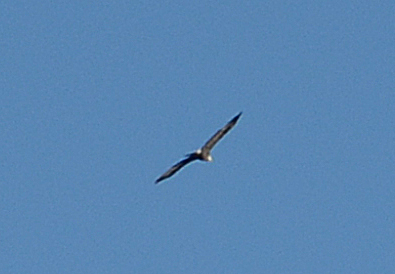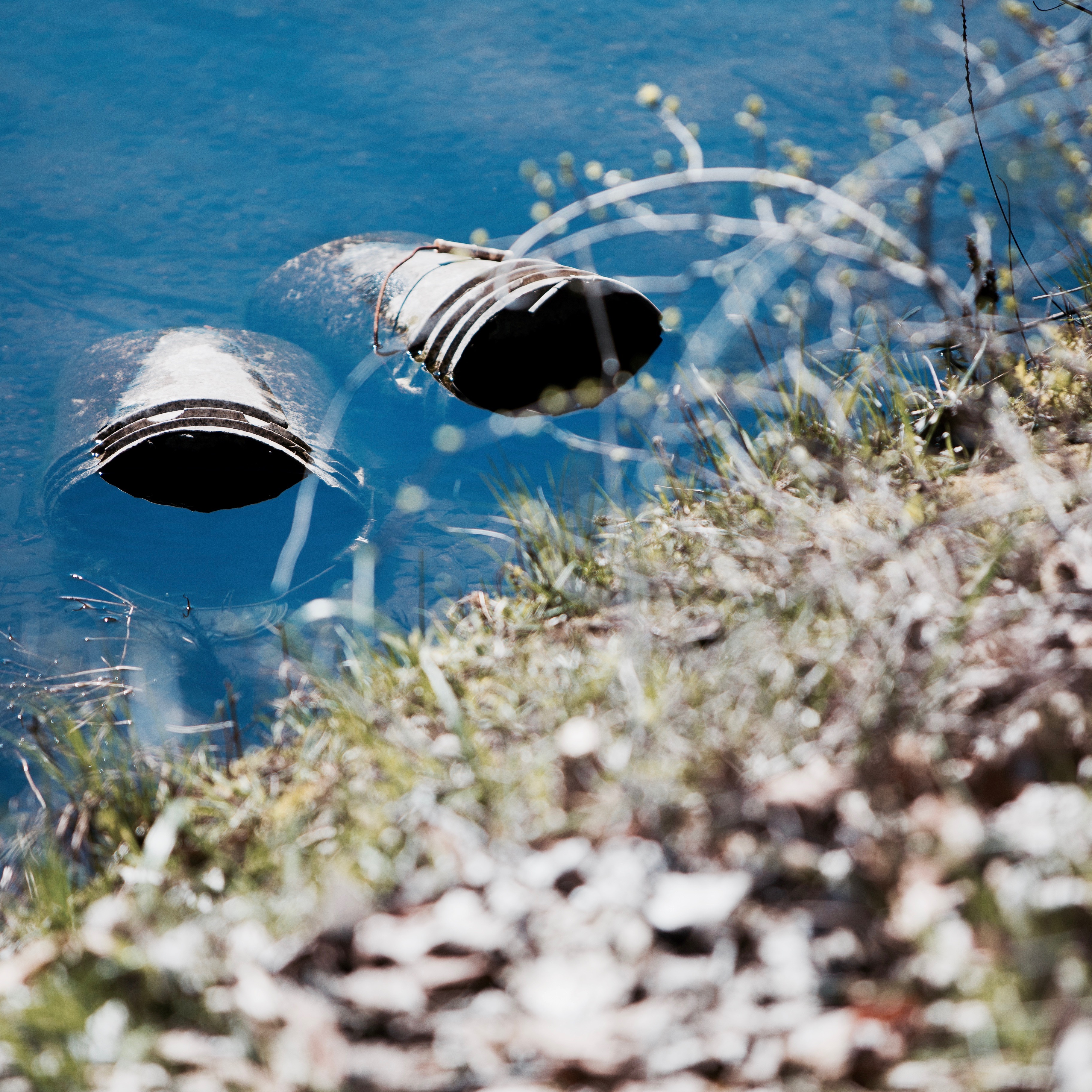
Conservation Law Foundation (CLF) argued Tuesday before the United States District Court for the District of Rhode Island concerning the failure of the U.S. Environmental Protection Agency (EPA) to adequately protect Rhode Island waterbodies from ongoing and devastating stormwater pollution. Despite determinations from EPA and Rhode Island’s Department of Environmental Management (DEM) that Mashapaug Pond, Bailey’s Brook, North Easton Pond, and other nearby waters are seriously harmed by runoff from surrounding commercial and industrial properties, EPA failed to require dischargers to obtain the necessary permits under the federal Clean Water Act.
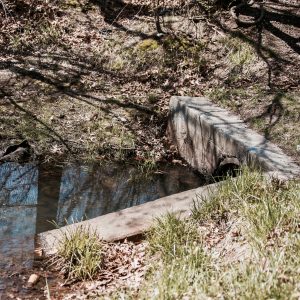
“One of the great sources of pride for Rhode Island – the Ocean State – ought to be our ponds, rivers and beautiful coastline, but decades of toxic runoff has imperiled our waters, closed our beaches and endangered important wildlife habitats,” said CLF attorney Max Greene. “There’s no question that nasty pollutants like nitrogen and phosphorus, the precursors to toxic algae blooms, are constantly flowing from industrial campuses and commercial shopping centers into nearby waterways, yet EPA has sat on its hands rather than take the legally-required steps to address this rampant contamination. Today, EPA was forced to answer for that neglect in federal court, and we’re optimistic that Rhode Island waters will soon be on the path to recovery.”
Today’s hearing comes on the heels of an announcement from Rhode Island DEM earlier this month that lower Narragansett Bay, lower Sakonnet River, and a portion of Rhode Island Sound are being closed due to toxic shellfish findings associated with harmful algae blooms.
For more information on CLF’s fight to protect Rhode Island from stormwater runoff, please see CLF’s white paper on the issue, “Closing the Clean Water Gap: Protecting our Waterways by Making All Polluters Pay.”
A copy of CLF’s filing can be read here, and photos of the endangered Mashapaug Pond can be seen here.

]]>
 Even as the Burrillville Town Council approved a resolution to oppose the siting and construction of Invenergy’s $700 million fracked gas and diesel oil burning power plant in their town, the next battle, over a proposed tax treaty between the town and the power plant company, was heating up.
Even as the Burrillville Town Council approved a resolution to oppose the siting and construction of Invenergy’s $700 million fracked gas and diesel oil burning power plant in their town, the next battle, over a proposed tax treaty between the town and the power plant company, was heating up.
The town council approved the resolution 7-0. The resolution also included a provision that Council President John Pacheco III will testify against the power plant before the Energy Facilities Siting Board (EFSB) and ask other municipalities to join the town in opposition.
The vote in opposition breaks a long period of “neutrality” on the part of the town council, which the council maintained was necessary so as to not give the appearance of trying to politically affect the outcomes of advisory opinions from the town planning and zoning boards.
“The siting board and Invenergy can certainly never say we did not follow the process,” said Council President Pacheco.
But in the audience, townspeople were holding bright yellow signs that said, NO TAX TREATY, a preview of Monday night’s town council meeting to vote on an agreement with Invenergy to collect $94 million or more from Invenergy if the power plant is ultimately approved. Townspeople say that approving this tax treaty undercuts the council’s statement of opposition.
One by one the town council members explained their opposition to the project. Councillor Kimberly Brissette-Brown, who was absent, had her statement read by the town clerk. There was no public comment allowed, but the bright signs held by audience members spoke volumes.
On a personal note, I was extremely touched by the comments made by Councillor David Place and the reactions of the townspeople to the mention about RI Future and the work we’ve done on Burrillville. Thank you.
To be continued on Monday night. Here’s the full video:

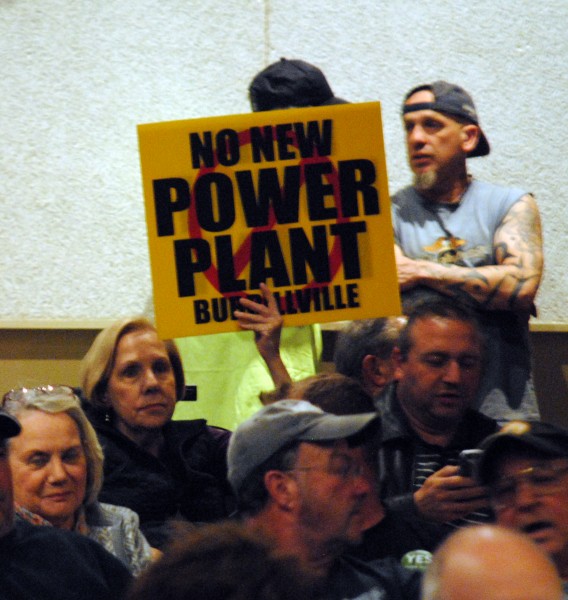 RIDEM’s third data request to Invenergy, released yesterday, reads as a devastating critique of the proposed $700 million fracked gas and diesel oil burning power plant. If Governor Gina Raimondo was serious when she recently told ecoRI News that, “…if there are issues then the plant won’t go forward,” then the project is dead on arrival.
RIDEM’s third data request to Invenergy, released yesterday, reads as a devastating critique of the proposed $700 million fracked gas and diesel oil burning power plant. If Governor Gina Raimondo was serious when she recently told ecoRI News that, “…if there are issues then the plant won’t go forward,” then the project is dead on arrival.
In addition to “missing info” that renders the application incomplete, on page 3 the Rhode Island Department of Environmental Management notes that impact of the the various projects in Burrillville has been fragmented, making the cumulative impact of Invenergy’s proposed power plant; Spectra Energy’s Aim Project; Eversource Energy, National Grid and Spectra Energy’s Access Northeast project and TransCanada’s Ocean State Power difficult to determine.
“For the purposes of comparing costs and benefits to wildlife, all of the existing and proposed work related to increased natural gas operations (processing and transport) in Burrillville should be reviewed as a single and complete project,” says RIDEM, “Piecemeal review of related projects in different stages by different applicants undercounts their cumulative impacts from loss of forests and fragmentation, air, noise and light pollution etc. in an area of the state that has been a longstanding conservation priority.”
On page 7, RIDEM alleges that the “applicant makes several confusing and conflicting assertions about the purpose and need for the project…
“The emissions and cost-benefit analyses both primarily only list benefits. A proper analysis should include costs, yet there is no mention of loss of forests, biodiversity, ecosystem services etc… This seems particularly important since the application notes that the majority of the benefits outlined (e.g. construction jobs and energy costs savings) would be rather short-lived and the majority of the foreseeable costs would be long term or permanent.”
When it comes to selling the idea of a fracked gas power plant, the RIDEM data request accuses Invenergy of circular logic. “A pointed example includes dismissing hydropower in the Power Generation Alternatives section (and omitting it from all other sections) solely because it would not be appropriate on the proposed [power plant] site, which was selected for proximity to the gas line, and then dismissing alternative project locations because they do not have the desired natural gas infrastructure.”
Further, the “premise that natural gas is the only way to meet [New England’s energy] demand is not borne out by the information provided,” says RIDEM.
RIDEM’s report to the Energy Facility Siting Board (EFSB) will be shaped by Invenergy’s answers to these and other questions. Though these questions raise serious doubts about the need for the new plant and Invenergy’s integrity in preparing its application, ultimately the EFSB takes RIDEM’s report as advisory only, meaning the board could choose to approve the project despite these issues.
Yet Governor Gina Raimondo’s words, that “if there are issues then the plant won’t go forward,” ring loudly here. The issues raised in this set of data requests are serious, and the questions raised must be addressed honestly.

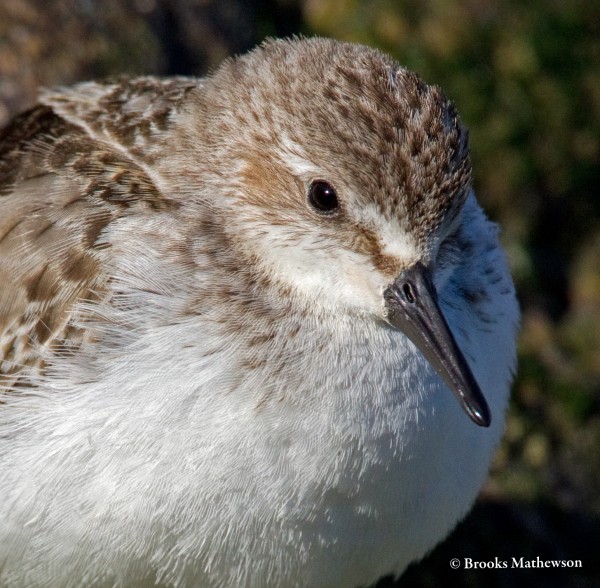
The kaleidoscope of colors found in the fall foliage as trees stop making chlorophyll and reveal a spectacular assortment of red, yellow, purple, and orange pigment is one of the great consolation prizes accompanying the loss of summer. However, there is another miracle of the natural world occurring in autumn, albeit a slightly less obvious one, fall bird migration.
Each fall millions of shorebirds, songbirds, raptors, and waterfowl stop in Rhode Island on their migratory journeys south. These birds are engaged in majestic pilgrimages of thousands of miles from breeding territories as far north as the Arctic to their wintering grounds in locales as distant as South America.
A patient observer on a fall walk along one of Rhode Island’s beaches may be treated to glimpses of more than a dozen species of plovers and sandpipers. These two major groups of shorebirds are most easily distinguished from each other by the shapes of their bills. Sandpipers have long thin bills, while plovers have short, thick bills. In addition, their behavior is another reliable tool of identification. If the bird is foraging quickly in a large group it is most likely a sandpiper. On the other hand if it is more methodical and solitary in its foraging technique it is likely a plover.
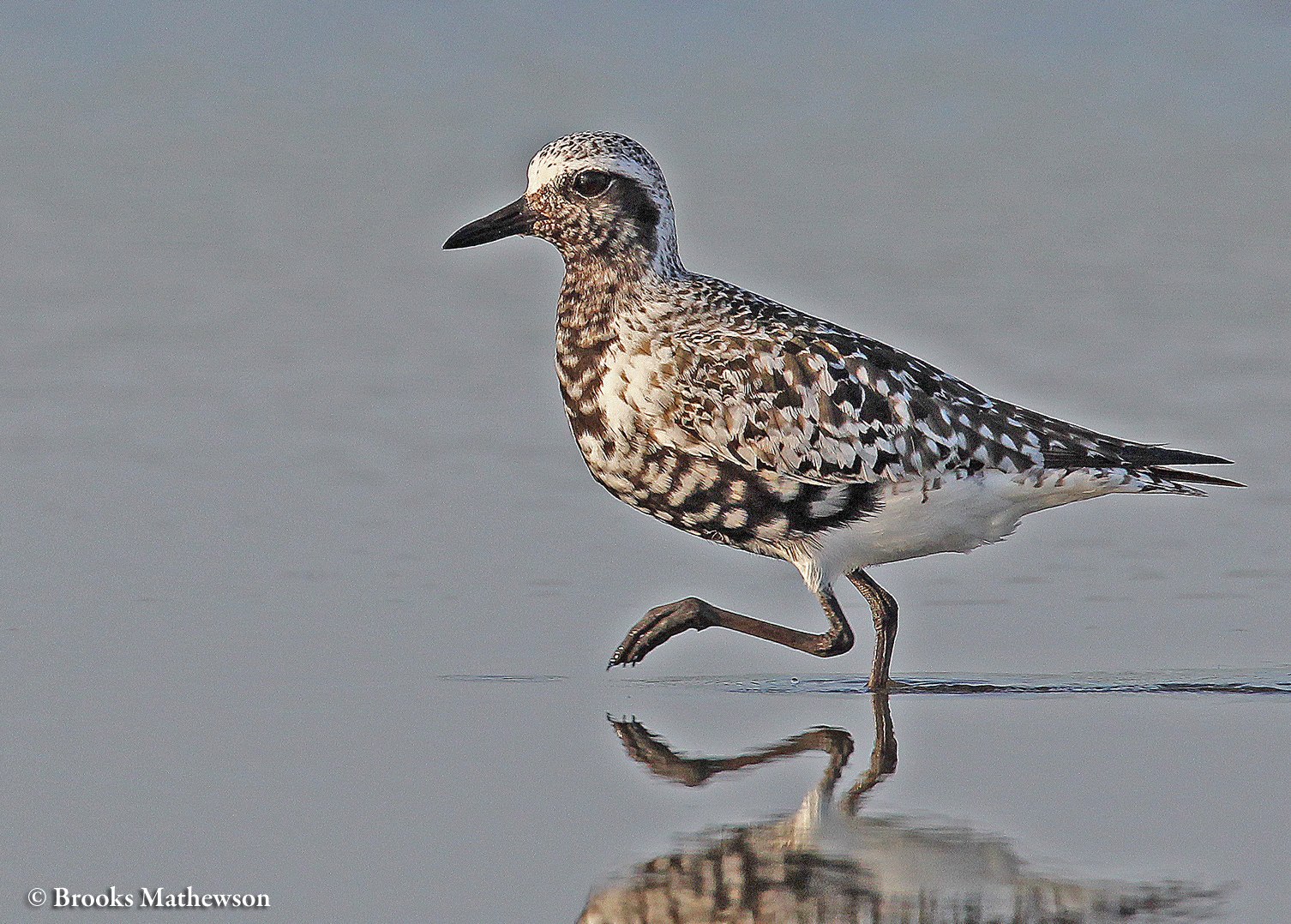
The most common sandpiper found along Rhode Island’s shores is the Sanderling. This is the bird most likely to be observed in large groups foraging at the ocean’s edge, following the surf as it advances and retreats. Sanderlings forage on small invertebrates both within the surf and in the exposed sand. While many of these birds will stay in Rhode Island throughout the fall and winter, others are merely pausing to rest and refuel before embarking on the next leg of their journey.
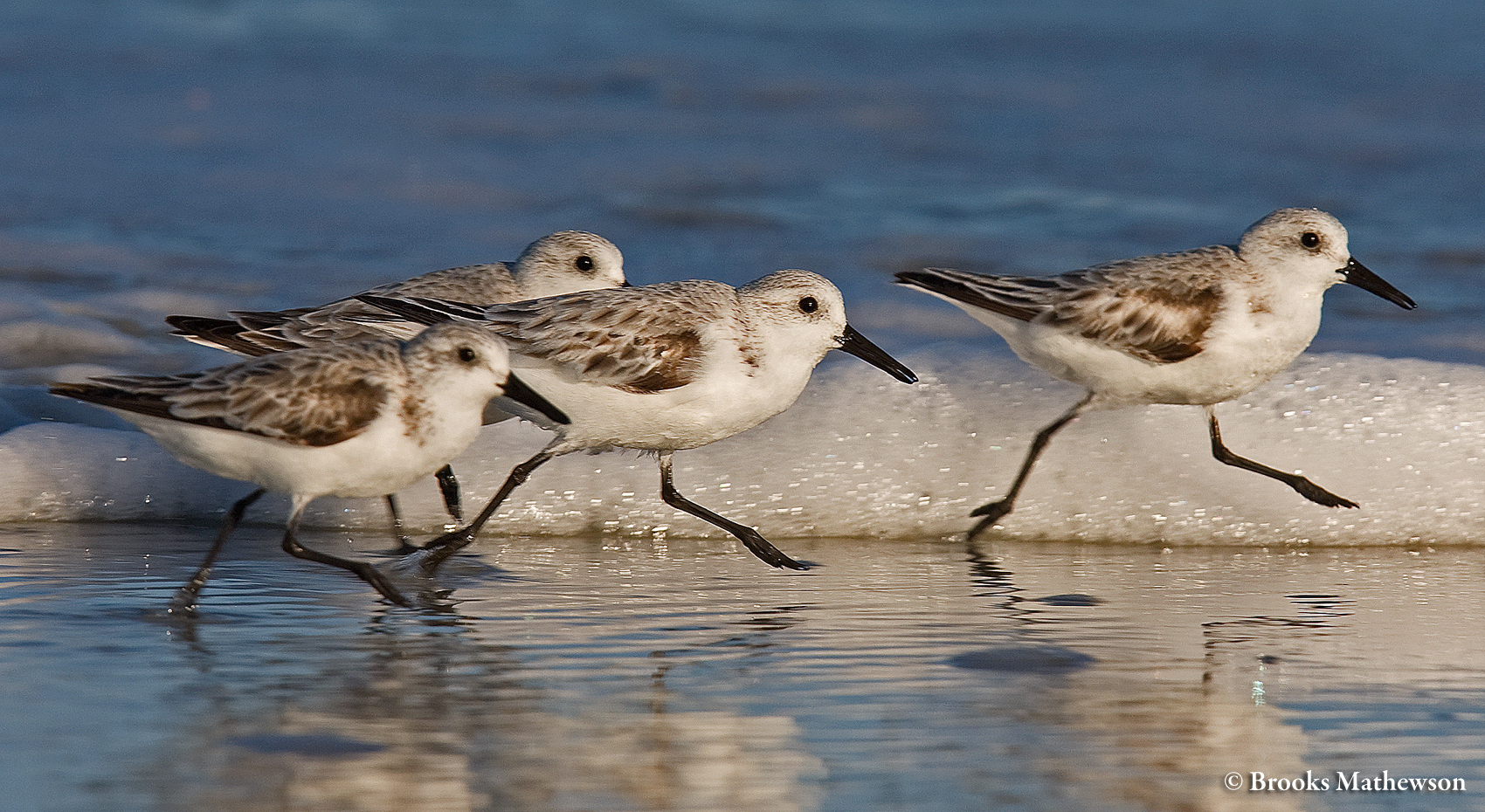
The other two sandpipers which are commonly observed along the ocean’s edge during the fall are the smaller Least and Semipalmated. These two species are similar in size and appearance, both being smaller and darker than the Sanderling. The easiest way to distinguish between these two species is by looking at their legs – the Semipalmated has black legs and the Least has yellowish legs.
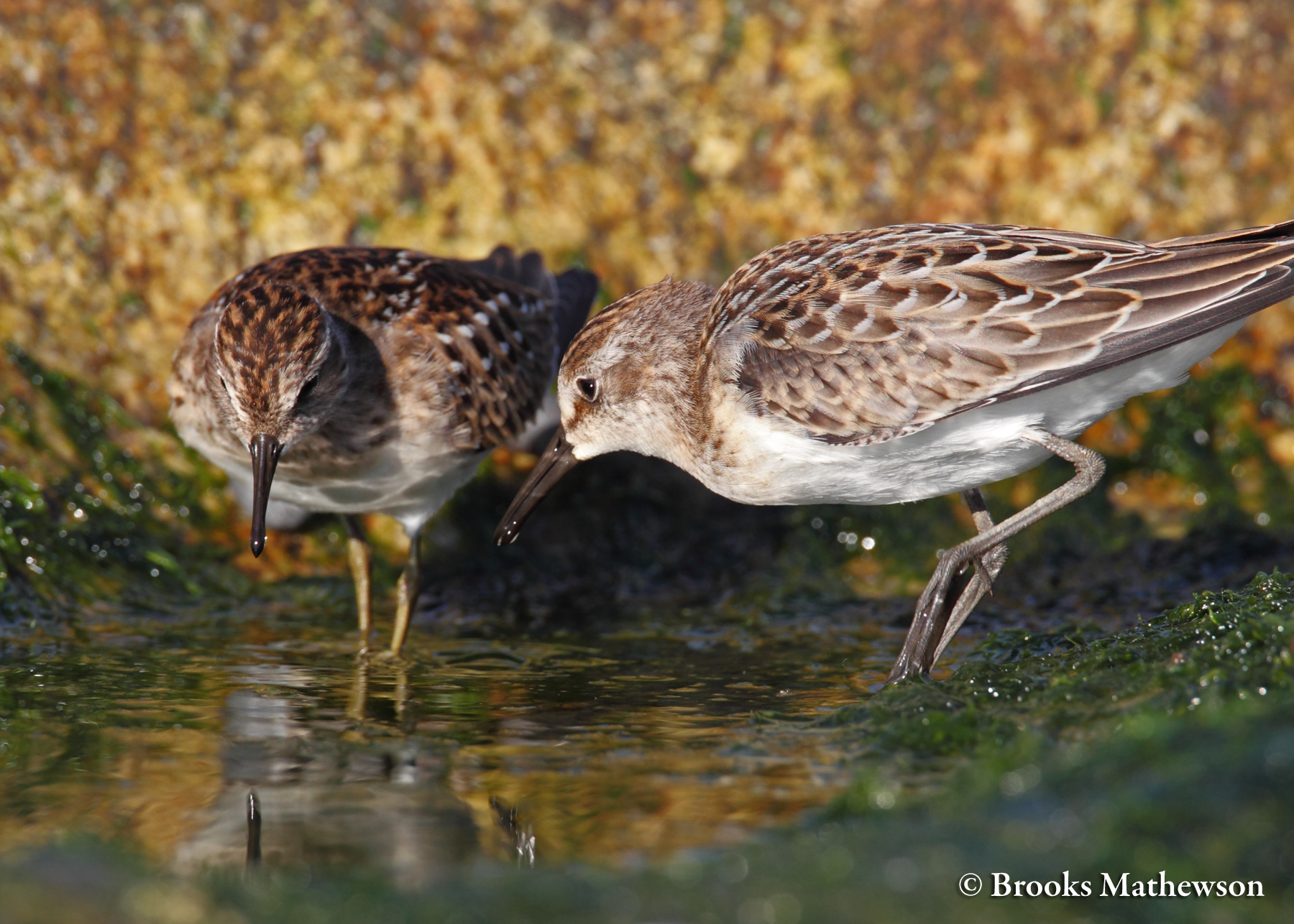
Our most common plover is the Semipalmated Plover, although it lives in relative obscurity due to the notoriety of its cousin in the genus Charadrius – the Piping Plover. Another very common visitor this time of year is the Black-bellied Plover. A larger Plover in the genus Pluvialis.
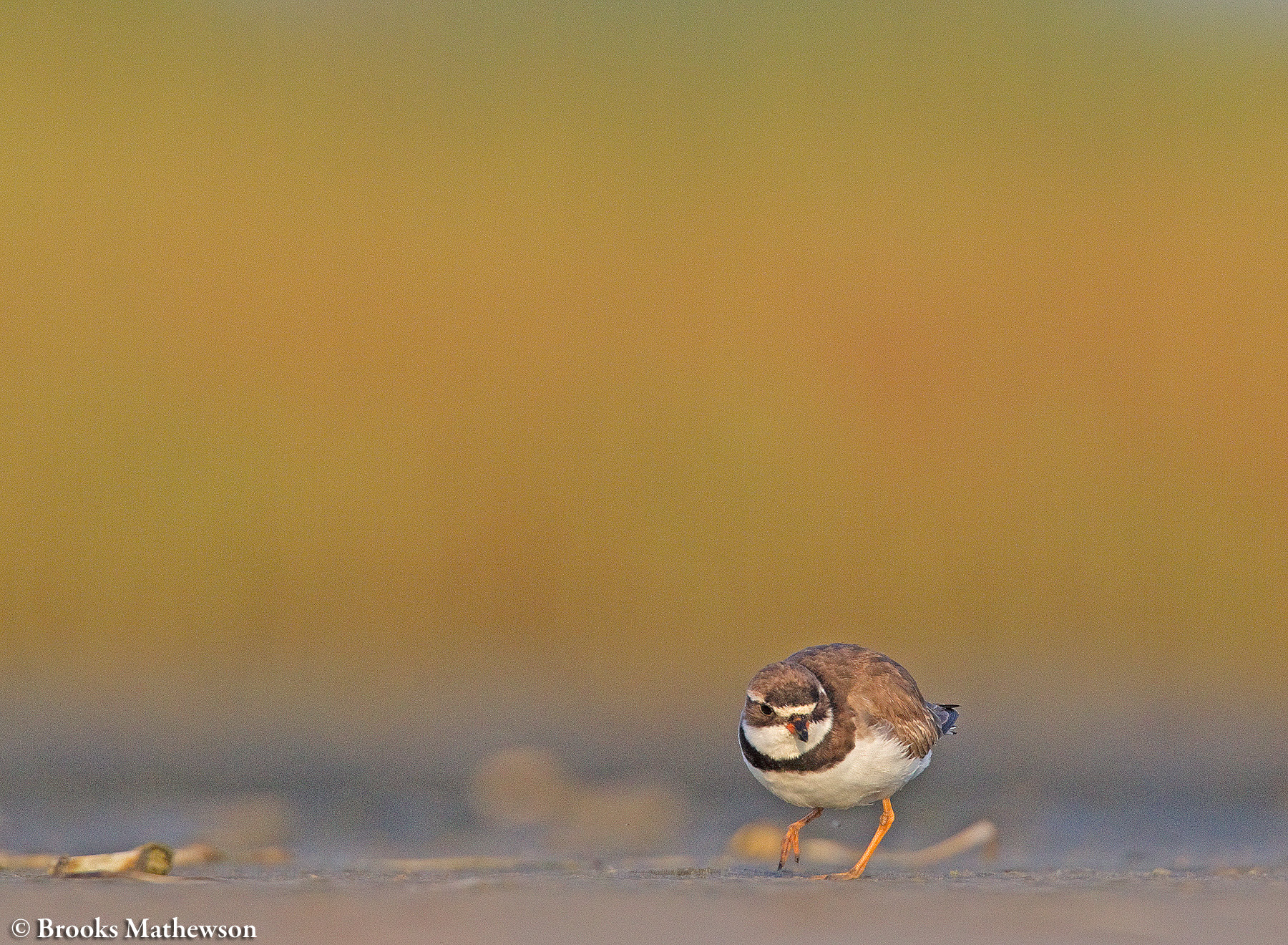
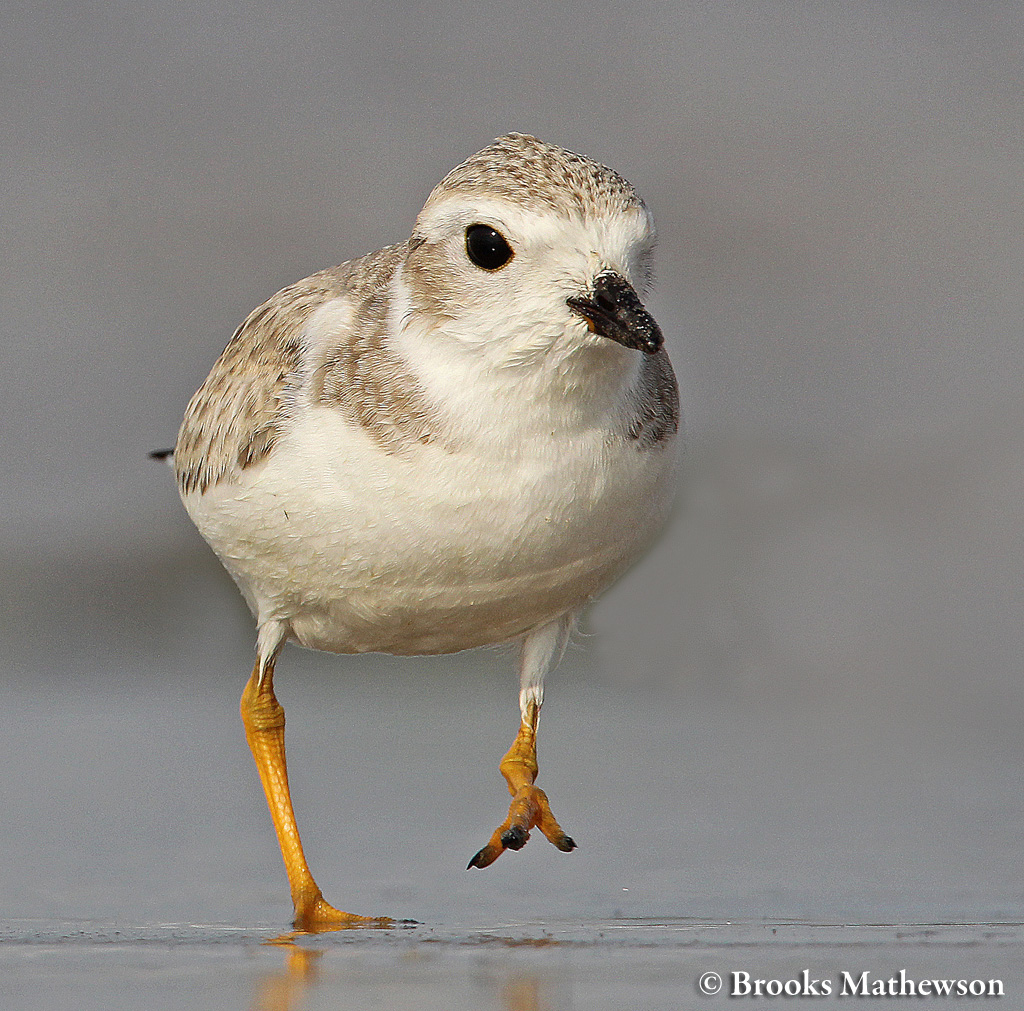
Once the common birds become familiar it becomes easier to pick out the less common migrants like the Baird’s Sandpiper, Buff-breasted Sandpiper, or Red Knot. In addition, many more shorebirds can be found in the salt marshes behind the barrier beaches.
But let’s save that for another day, I can see your eyes glazing over in the back. Just get out there and enjoy the beautiful fall weather and the salt air, and maybe stop for a minute and take a closer look at these small migratory birds passing through our state on their way to distant lands.
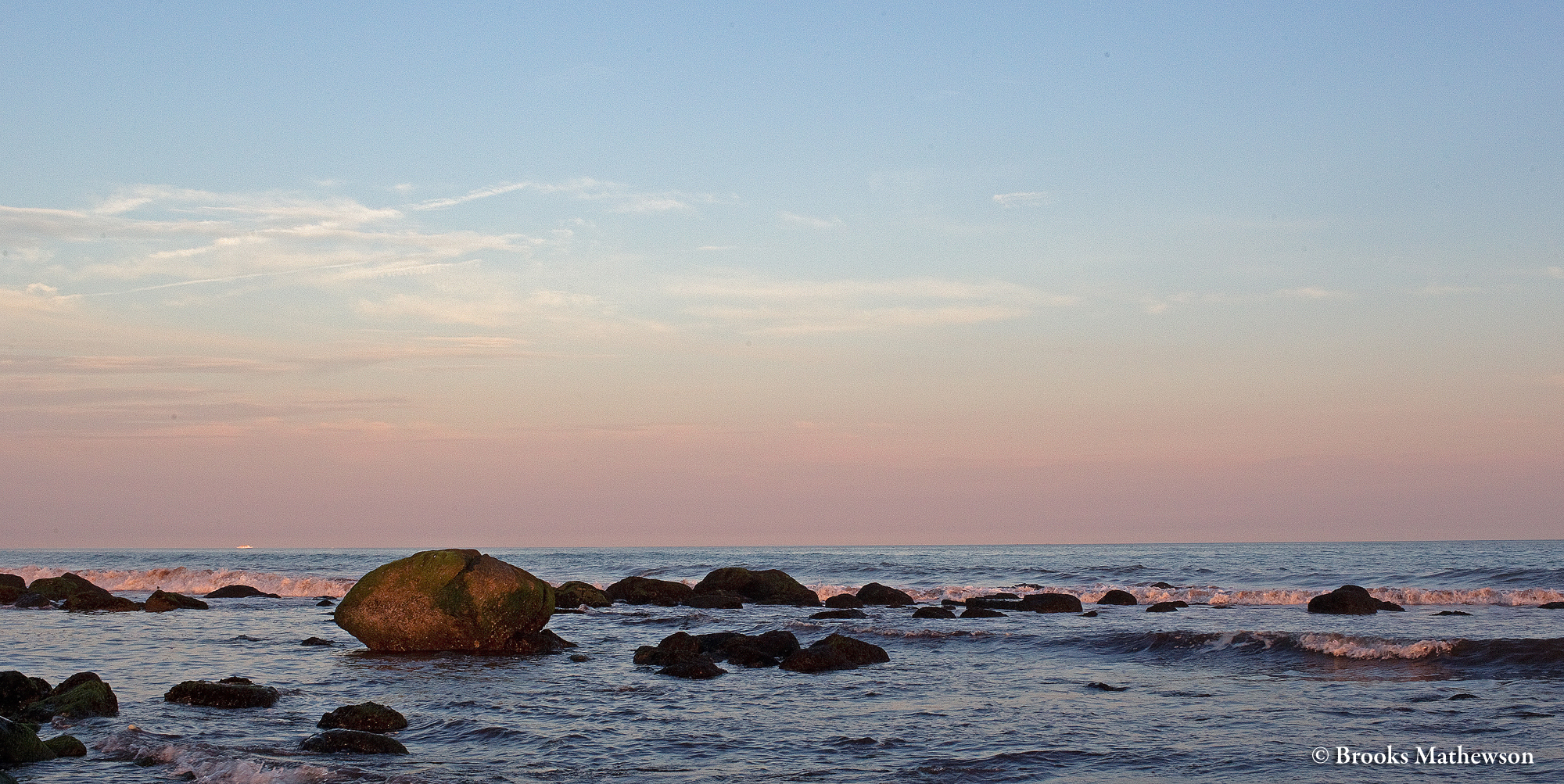
]]>
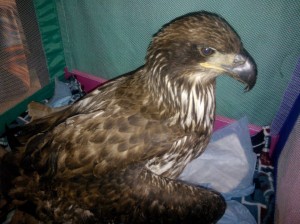
The injured bald eagle is still recovering in wildlife rehab in Saunderstown. Unfortunately, her recovery is going “slower than we had hoped,” said Kristin Flether, the executive director of the Wildlife Rehabilitators Association of Rhode Island.
The eagle was shot and found at the Johnson Landfill last week. State and federal officials are investigating.
“She is still not self feeding,” Fletcher said, noting that renowned local wildlife veterinarian Meredith Bird believes the eagle has lead poisoning frm the buckshot and may also have some “neurological issues.”
Fletcher added, “there may be more at play here.” The eagle has a CAT scan scheduled for today at 2pm.
Eleanor, as the two-year-old female bald eagle is affectionately and unofficially being called, is eating a vitamin powder mixed with water called Carnivore Care. But they’ve been offering her whiting donated from Galilee “with the heads still on,” said Fletcher, but Eleanor isn’t interested.
While this is the first injured eagle the Wildlife Rehabilitators Association of Rhode Island have tended to, it’s by no means the state’s only bald eagle. Chris Raithel, a wildlife biologist with DEM, estimated there are between 10 and 20 bald eagles in Rhode Island this winter. They winter in Rhode Island from as far away as Canada, or the deep south.
“In the early 1980’s, when I first started bird watching, it was unusual to see even one,” he said. This winter, 6 have been spotted at one time on the East Providence Reservoir.
Like other carnivorous birds, bald eagle’s population declined drastically in the 1960’s and 70’s when farmers used DDT to spray crops. A generation after outlawing DDT, eagles, osprey, falcons and pelicans are all making comebacks. They are living evidence that environmental regulation works.

“You can see them almost any place at any time,” Raithel said. Some of their more common locales include the Seekonk River near Swan Point Cemetery, 100 Acre Pond in Barrington, Indian Lake in South Kingstown and I saw one over Greenwich Cove just a few weeks ago.
“They prey on fish, ducks and gulls and they tend to hang around where the pickings are good,” he said. “They also scavenge. If a deer dies, they will eat that. They can be seen at fish processing plants.”
The state’s lone known nesting pair has been living over an island on the Scituate Reservoir watershed for about 10 years. Their nest can be seen from Route 116, Raithel said. “It’s been a highly productive pair,” Raithel said. “Every year they have reared young successfully.”
